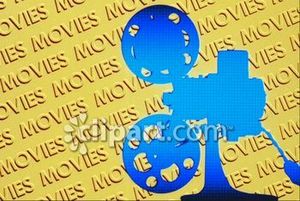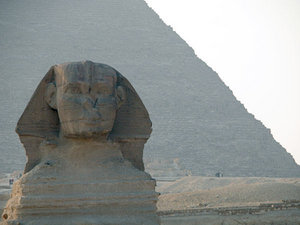The three films I am reviewing are classic and are a must see if you are a occupying a space in this world. They are a century old but still seem as if they were made today. These films make you laugh cry, get angry, and be amazed at the craft of filmmaking. They were the Star Wars of their time. The films that changed the rules of filmmaking. They dared to be different paving the way for future filmmakers.
Three Classic films that are required viewing# 1. Gone With The Wind (1939)
This movie is a strong historical drama, which retells the events of the Civil War. The story’s heroine centers on a strong-willed young woman Scarlet 0′ Hara. She is a woman caught in the middle of a War and two different men, the southern gentleman Ashley Wilkes (Leslie Howard) and Rhett Butler (Clark Gable) from the East. Both are rich and good-looking.
Scarlet convinces herself that she is only in love with Ashley Wilkes. He confesses he is in love with her, however he has to marry his cousin the simple, kind, girl with the heart of gold, Melanie Hamilton (Olivia De Havilland). It is no surprise to people at this period of time because they know that most men love Starlet’s free independent mind, however no man will marry such a girl. The movie’s setting is the Old South, during the time of the last of the reign of the Southern rich slave masters. The Yankees are about to attack the Confederates because of the disagreement with the North about slavery.
The gentlemen and woman of Georgia are never the same when they begin to experience the hard physical labor of their black slaves. The film tells the audience that despite all the hardships, there is still hope because they have what is most important and essential to them, the land. The beautiful and talented Vivien Leigh stars as the heroine Scarlet O’Hara. Scarlet is a bitchy, selfish, stubborn, strong independent woman who resents the fact that she has to be silly and compliant in order to catch a man. Showing shades of upcoming feminism.
Scarlet marries a few times all for the wrong reasons. Once to an Atlanta storekeeper, not for love however just for the fact that Scarlet needs money to keep her family’s land after the war has ruined most of the South. Waiting in the wings is Rhett Butler, the seductive Millionaire from the East. Scarlet won’t admit that she loves him or even lusts after him. They are more alike then she would like to admit and he is constantly reminded of whom she really is. He is like her, flawed and selfish.
Rhet Butler is a macho scoundrel, arrogant and charismatic. He is the guy you hate to love. He is Starlet’s perfect match however she convinces herself that Ashley is the one she really wants. Ashley is a gentleman and treats Scarlet like a lady even if she isn’t. Ret is too much like her and that is not what Scarlet wants. Eventually, Ret and Scarlet marry however their marriage does not last. Ret Butler is the most unforgettable character in film. Every woman wants him and every man wants to be him.
Gone with the Wind is a powerful love story set in the most defining event in American history, the Civil War. This movie is truly an epic. It’s a huge film, however it is really about one woman who doesn’t know what she wants. The story is gripping and entertaining. The production is wonderful. I love the Technicolor, photography it is vibrant and beautiful. The scene when the camera pulls back to show a street covered with thousands of dying men is tragic and quite powerful. The musical score of the film by Max Steiner is as grand and epic as the film. “Gone with the Wind” deserves to be one of the most popular films ever made.
I was so lucky to see this film in an actual theater at a classic film festival in New York. It was great to see this classic on the big screen in a theater with popcorn. I felt as if I was transported back to the 1930’s seeing it for the first time.
Three classic films that are required viewing#2 The Lady Eve (1941)
This is a superior film about the pleasure in the charades humans like to play. The film may seem harmless and funny it instead is richer in meaning. The film is about a father and daughter Con man team Jean (Barbara Stanwyck) and her father, the “Colonel” Harrington (Charles Colburn) decides to steal money from billionaire Charles (Henry Fonda) during a sea cruise. Charles has spent a year on a scientific expedition in the Amazon. In a brilliant move “The lady Eve” hears this and decides to tempt him. And thus begin the battle between the sexes.
Stanwyck’s “Eve” looks to have everything and Charles under control. Fonda’s “Charles” presents a silly picture of humankind. He is the classic nerd; prone to pratfalls, he’s a little empty headed and dewy-eyed about Eve. His great fascination of snakes represents his inexperience of the real world. This courtship is not simple, not when one of his snakes escapes and ends up in Eve’s cabin.
This is when the usually cool “Eve” goes berserk and screams her head off in terror. Charles eventually discovers Jean’s identity as a con woman and he tries to give as much as emotional hurt as best as he can considering he has fallen in love with her. He is hurt deeply by the deception and tries to get over her, but he can’t. There is a power play between the couple to which Jean wins all the time by staying one step ahead of Charles. I think it would be impossible to make a movie of such fun-spirited sexual politics today.
Jean is a temptress who never seems as if she is castrating Charles. She doesn’t lose her femininity as she plays the game of love with Charles. Jean only lets go of her imperious position when she allows herself to really love Charles. The incredibly brilliant thing about this is that Jeans confession of love to Charles is not seen as a defeat for women but just as an action of a woman in love. The film’s message is that the ultimate con game is what brings people together in humanity.
Three classic films that are required viewing#3 Citizen Kane (1941)
This film is cinematically innovative the mystery/drama film released by RKO Pictures; is the first feature film that was directed by Orson Welles. The film is the story of Charles Foster Kane whose struggle for power as a publisher changed from just a passing thrill seeking to a war with competing publishers and how this affects friends and family. The film follows a reporter in search of the meaning of Kane’s last dying word “Rosebud.” The main character of the film “Kane” is loosely based on the newspaper magnate William Randolph Hearst.
The film is about an arrogant, attention getting Charles Foster Kane (Orson Welles) who has the inability to love anything but power. He loves only on his own terms. As a result, Kane loses the love of his family and friends and dies old, lonely, and alone in his opulent home Xanadu. Citizen Kane is mostly known for its filmmaking innovations. Film historians and scholars see the film as Welles attempt to create a new style of filmmaking.
I thought Orson Welle’s use a form of expressionism in his use of light and shadow is amazing even for today. Orson Welles was not the first to use this form of filmmaking, however he was the first to use this form all together. Also, Welles acting style like the others is an early example of the method acting that became popular a decade later. Another innovative technique Welles used is the use of deep focus in every scene. It is found in the background, foreground, as well as everything in between is in a sharp focus.
Low-angle shots are another method where Welles used to display an upward point of view in an effort to expose ceilings in the background of several scenes. This was unheard of in this day because most films were shot on soundstages and not on location making it impossible to film at an angle, which would show ceilings. The most fascinating and brilliant scene is at the breakfast table, when Orson Welles shows the slow dissolve of his marriage through the years in quick flashes.
In this scene Orson Welles introduces the use of episodic-sequence to tell the story by using the same stage as the actors changes their costumes and make-up in between cuts. It was a way to show each scene following each cut would look as if it takes place in the same location, however long time after the previous cut. This way Welles was able to show the beginning, middle, and end of his marriage in a matter of minutes. It was as brilliant and innovative today as it was then. I loved and enjoyed each of these movies very much.
There you have it. I hope you take my advice and see these films either on DVD, or Turner Classic Channel. I especially recommend you see these films if they are re-released to the theaters.
Did I forget to mention your favorite classic must see film? Please write them down in the comment box below:



